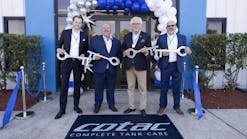Harnessing the nationwide network of fuel retail locations is the fastest, most cost-effective way to eliminate electric-vehicle range anxiety, according to the National Association of Truck Stop Owners (NATSO) and the Society of Independent Gasoline Marketers of America (SIGMA) in recent comments filed with the Biden Administration.
The two organizations, which collectively represent more than 80% of fuel retailers in the United States, urged the U.S. Department of Transportation and the Federal Highway Administration (FHWA) to develop EV charging grant programs in a manner that works with consumer behaviors, rather than against them.
Electric vehicle drivers will expect their driving experience to be as seamless and predictable as it is today. Replicating today’s gasoline and diesel fueling experience for drivers of electric-powered vehicles will ensure that EV drivers will not suffer from range anxiety, they argued.
“Many seem to think that (EVs) require creating an entirely new refueling network,” the groups said in their filing. “That is not the case.”
The retail fuel industry is prepared to participate in the EV charging grant programs included in last year’s infrastructure bill, according to the comments.
Private-sector fueling locations ensure that drivers of gasoline-powered cars do not have concerns about how many miles they can drive before refueling. A similar approach will drive demand for electric vehicle charging stations.
Thousands of truckstops and travel centers are located less than 1 mile from highway exits, are highly visible, and provide amenities such as security, food, and restrooms that customers need while taking 20-to-30-minute breaks during long-distance travel. Widespread availability of DC fast chargers at these facilities will make consumers more comfortable purchasing EVs.
Similarly, smaller-format fuel retailers are found throughout the country, including in communities where most residents cannot reliably charge their electric vehicles overnight. These businesses are also well-suited for fast, on-the-go charging that does not require a full fill-up, NATSO and SIGMA said.
The National Electric Vehicle Formula Program and the Charging and Fueling Infrastructure Program enacted under the Infrastructure Investment and Jobs Act represent a critical opportunity to shape the future of electric vehicle fast charging and the requisite network of electric vehicle charging stations.
Any policies or guidance to state transportation departments should encourage states to partner with the private sector to strengthen the business case for investment in electric vehicle charging infrastructure for the long term.
NATSO and SIGMA said programs should be administered in such a way that they:
- Embrace the existing refueling network and encourage market reforms to enhance the business case for electric vehicle charging station investments by fuel retailers, thereby driving competition and guaranteeing price transparency for electric fuel;
- Adhere to established FHWA guidance, which clarified that state transportation departments may not implement or permit others to implement commercial services, including EV charging stations, within the interstate right-of-way;
- Incentivize state governments and utilities to partner with the private sector on terms that make economic sense for all and encourage competitive charging options;
- Steer grants toward eligible entities that will, in turn, contract with the private sector and award eligible funds toward those who will further a sustainable market;
- Eliminate barriers to profitable investment in electric vehicle charging. Specifically, federal dollars for EV charging should follow the “make-ready” model whereby regulated utilities receive money to enhance the grid’s capacity to accommodate a dramatic increase in EV chargers, while the private sector owns and operates the actual chargers.









